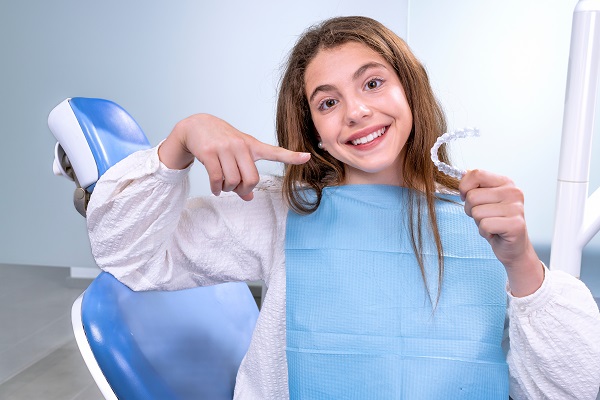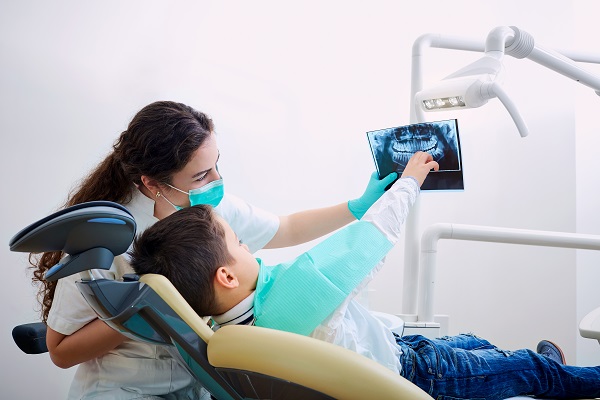3 Benefits of Corrective Braces

Corrective braces have been around for decades, and they remain one of the most effective ways to correct teeth alignment issues like overbites, underbites, and crossbites. These devices help to improve teeth alignment issues by gradually pushing your teeth to a better alignment.
Braces are made up of two main components: brackets that are cemented to each of the patient’s teeth and wires that connect the brackets on each dental arch. The tighter the wires are, the greater the force being applied to the patient’s teeth.
Historically, corrective braces have typically been made with metal components, but this created poor aesthetics. Fortunately, less conspicuous options, like clear braces, have been developed. These devices are identical to traditional metal braces, but they come with tooth-colored or clear brackets and transparent wires instead of metal parts. It makes it a lot harder to notice the contraption on the patient’s teeth.
3 Benefits of straightening your teeth with corrective braces
Here are some of the benefits of addressing orthodontic issues with dental braces:
1. Protects against tooth decay and gum disease
Poorly-aligned teeth are more complicated to clean than straight teeth. The poor alignment of teeth can lead to some teeth overlapping against others, creating hard-to-reach nooks and crannies that cannot be reached with the bristles of a toothbrush.
This allows bacteria and plaque to build up on teeth surfaces, increasing a person’s risk of tooth decay and gum disease. Tooth decay is caused by the acids in oral bacteria, while gum tissues being infected by bacteria causes gum disease.
2. Better option for kids
Teeth straightening treatments are usually more effective on kids since their jaw is still developing at that stage. While some children might prefer to have their orthodontic issues addressed with removable devices like clear aligners (which provide the most discreet treatment option), that typically is not the best solution for young patients since aligners require lots of commitment on the patient’s part.
Clear aligners need to be worn for at least 22 hours each day, and treatments can last up to two years. Many children might struggle with keeping up with such devices for so long, and they might lose a few aligner trays over the course of their treatment.
Corrective braces are fixed in place once attached to the patient’s teeth, so there is no need to worry about the child not wearing their appliance as recommended.
3. An improved smile
Braces can be used to fix a wider range of orthodontic issues than clear aligners, like those caused by jaw abnormalities. Treatment times with braces are often somewhere between 12 to 36 months, and the patient ends up with a more attractive smile. Patients might need to wear a retainer after their treatment to keep their teeth in their new positions.
Ready for a straighter smile?
Ready to improve the alignment of your teeth? Give us a call or visit our Wayne clinic to set up an appointment with our orthodontist.
Request an appointment here: https://www.drsallysong.com or call The Orthodontic Center Of Wayne - Dr. Sally Song at (973) 696-5220 for an appointment in our Wayne office.
Check out what others are saying about our dental services on Yelp: Orthodontics in Wayne, NJ.
Recent Posts
Even though braces are common among teenagers, getting them is a new orthodontic experience for every patient. Teens and their parents tend to have many questions about braces and other orthodontic treatments for teens, when to get braces, and what having braces will be like. Here are some of the most common questions orthodontists hear…
The primary goal of early orthodontic treatment is to prevent and fix bite misalignments. Several causes, including genetics, the premature loss of primary (baby) teeth, and harmful oral habits (like thumb sucking) may lead to such anomalies. Orthodontic abnormalities might be congenital or occur during early childhood. Straight teeth can reduce the incidence of dental…
Invisalign® has changed how willing teenagers –– and everyone else –– are to start teeth straightening treatments. It provides an alternative to traditional metal braces that is virtually impossible to detect. Invisalign® treatments work the same way conventional braces work, the aligner trays exert a force on the patient's teeth pushing their teeth into better…
Oral health is foundational to good overall health. Through the help of an orthodontist and bite correction, difficulties with chewing or speaking can be overcome. The inability to ingest food or clearly articulate impacts both physical and mental health. Bite correction has the potential to change the course of an individual’s health and wellness.Changes in…


